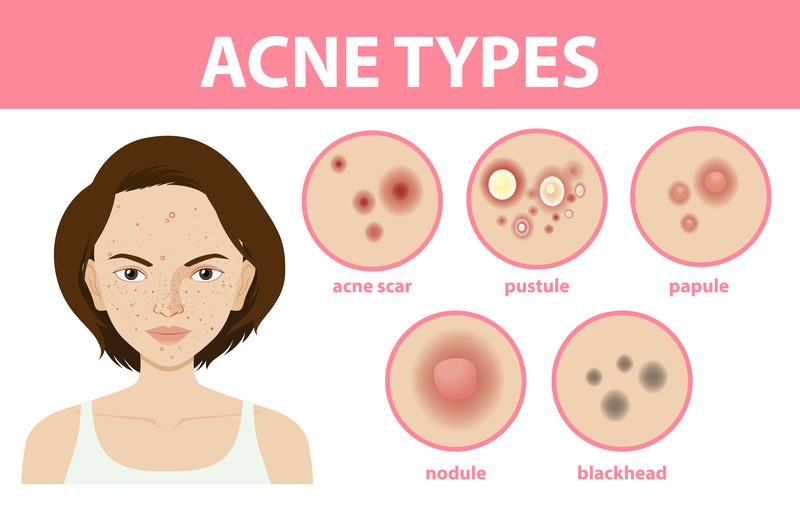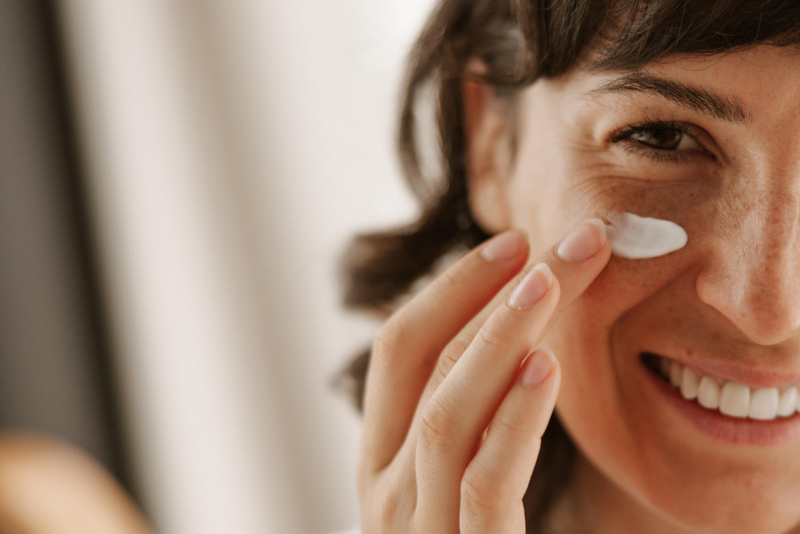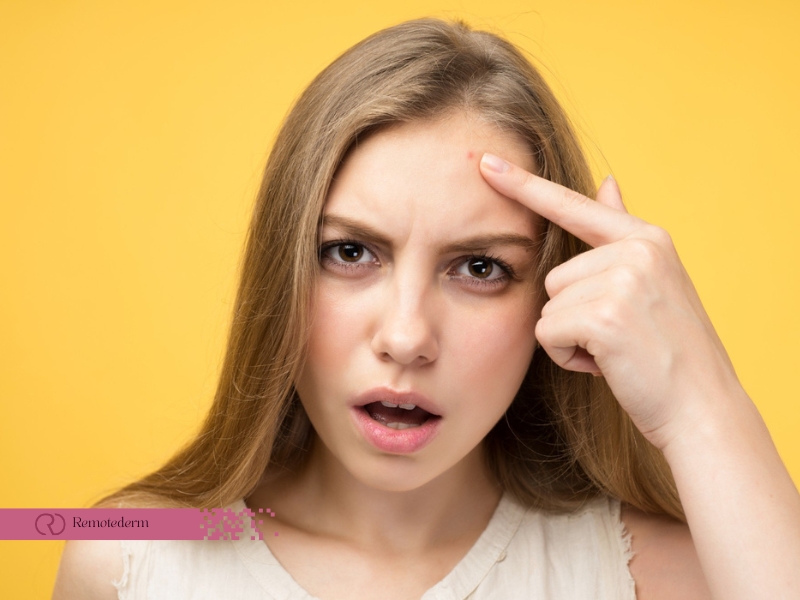Acne on the forehead is a common problem for people of all ages. Understanding what causes it and how to treat the problem can help you clear your skin whether you have a few occasional zits or frequent breakouts that won’t go away. In this article we’ll go over some of the reasons why acne forms specifically on this part of the face as well as offer up realistic ideas for keeping it under control and getting rid of it once and for all.
Reasons Behind Forehead Acne
Forehead acne can be caused by several factors, including:
- Hormonal Changes: Hormones fluctuate most dramatically around puberty but they also change during menstruation pregnancy and times of intense stress such as finals week at school; all these can cause glands within skin to produce more oil than usual which may lead to pimples forming.
- Poor Hygiene: If you do not wash your face often enough or if you do clean it but don’t do so properly the built-up dirt can mix with dead cells and clog pores causing blackheads, whiteheads, cysts among other things known collectively as acne vulgaris.
- Hair Products: Oils, gels, and sprays which you apply to your head may move to your forehead and end up blocking skin pores hence causing pimples.
- Diet: Make sure that the diet you consume does not contain a lot of sugars or fats since they can lead to acne. Moreover, some individuals’ skin conditions get worse when they consume dairy products.
- Genes: Family genetics play a key role in breaking out acne, besides your environment will also determine how severe the condition becomes.
Different Types of Forehead Acne
Various types of acne exist that can appear on the forehead. These include:
- Whiteheads: Small flesh-colored or white bumps due to clogging of pores with oil and dead skin cells
- Blackheads: Open comedones that appear black because the material within the pore oxidizes.
- Papules: Irritated or infected hair follicles cause small red raised bumps.
- Pustules: These are similar to papules but filled with pus making them appear white or yellow in color.
- Cystic Acne: Large painful lumps filled with pus under your skin. If not treated properly this type of acne can lead to scarring.
- Fungal Acne: This is caused by an overgrowth of yeast on the skin resulting in itchy uniform pimples.

Effective Remedies for Forehead Acne
Acne on the forehead can make your skin look and feel terrible. This article will help you find the best treatment methods for this problem. You can clear up your skin with these different remedies which range from OTC drugs all the way up to prescribed medicines:
Over-the-Counter (OTC) Remedies
If it’s not too bad, then over the counter treatments might work out well enough. Look for things that have got:
- Benzoyl Peroxide: Reduced redness by breaking down bacteria causing acne.
- Salicylic Acid: Beta hydroxy acid used for cleaning out pores and exfoliating dead cells off the surface of the skin.
- Alpha Hydroxy Acids (AHAs): These include Glycolic Acid and are known to help with skin texture through exfoliation.
- Sulfur: It absorbs excess oils while drying up top layers of the epidermis at the same time helping them flake off easily.
Prescription Medications
For really severe acne, a skin specialist might recommend:
- Topical Retinoids: These are drugs that can reduce swelling and stop pores from getting clogged up. Tretinoin is one of them.
- Antibiotics: These kill the bacteria that cause acne and also bring down redness when applied on the skin or taken through the mouth.
- Oral Contraceptives: By balancing hormones, birth control pills help women with their acne problems.
- Isotretinoin: Cystic acne can be treated with this powerfully effective oral drug.
Online Acne Treatment Options
You are able to have talks with skin physicians who will give medicines and instructions for managing your skin problems on a number of tele-medicine platforms. Online acne treatment may be especially helpful for individuals living in distant places or those that are extremely busy in Canada since it ensures that one gets professional advice and effective treatment plans irrespective of where they stay.
How to Treat Forehead Acne?
When it comes to managing forehead acne, never give up; it can hang around longer than your previous breakouts did. The following are methods that work:
Daily Skincare Routine
The treatment for forehead acne is comprehensive and regular skincare. The steps are as follows:
- Cleaning: Wash your face twice a day with a mild cleanser to get rid of excess oil, dirt, and makeup. Use a cleanser that doesn’t contain harsh chemicals or fragrances, as these can irritate your skin.
- Exfoliation: Use a mild exfoliant once or twice a week to slough off dead skin cells. Avoid choosing the wrong product for your skin type as this can worsen pimples through skin irritation; therefore refrain from using a too strong scrub or doing too much exfoliation.
- Moisturizing: To stop your skin getting dry but without becoming greasy use non-comedogenic moisturizer. Even oily skins need an emollient, failure to do so could result in more sebum being produced.
- Sun Protection: Use a broad-spectrum sunscreen with at least SPF 30 to protect your skin from UV rays, which can aggravate acne and result in hyperpigmentation. In Canada, using sunscreen is essential year-round, even during the winter when lows can reach double figures. Look for sunscreens designed specifically for acne-prone skin that are oil-free.

Lifestyle Improvements
For good health and happiness, it is essential to make changes to your lifestyle. You can achieve this by adopting the under mentioned habits which are responsible for physical as well as mental soundness:
- Diet: Eat less sugary or oily stuff and more fruits, vegetables and whole grain foods.
- Hydration: Take plenty of water so that you can get rid of toxins from your body and also keep your skin moist all the time.
- Stress Management: Participate in activities such as yoga, meditation or exercises which help relieve stress since they regulate hormones too.
Final Thoughts
Forehead acnes are irritating; they can, however, be easily dealt with. Clearer skin can be yours if you understand why they occur and the different types there are, treat them appropriately and maintain good skincare habits. It is crucial that individuals with persistent or severe forehead acne seek medical attention from dermatologists who will help come up with the most suitable treatment plans based on their needs.
FAQs
1. What is Forehead Acne?
Hormonal imbalances, poor hygiene, or the use of pore-clogging hair products can cause acne on the forehead. Besides, it can also mean you are stressed or have dietary problems.
2. How do I keep my forehead from getting Fungus Acne?
In order to prevent fungal acne it is important that you keep your skin clean and dry at all times. You should not use oily or heavy hair products as they may clog pores on the face leading to an outbreak of this type of acne. You may also need to consider antifungal treatments if suggested by a dermatologist.
3. Can certain foods cause forehead acne?
Yes, specifically those high in sugar and dairy can trigger acne. For one’s health fruits, vegetables and whole grains should not be lacking in their diet.
4. Is it safe to use multiple acne treatments at once?
It is highly advised that one should be careful when mixing different kinds of acne treatments as some ingredients may react with each other. To be specific, start multiple treatments after you have consulted your dermatologist who will guide you on whether they are compatible or not depending on the type of skin you have.
